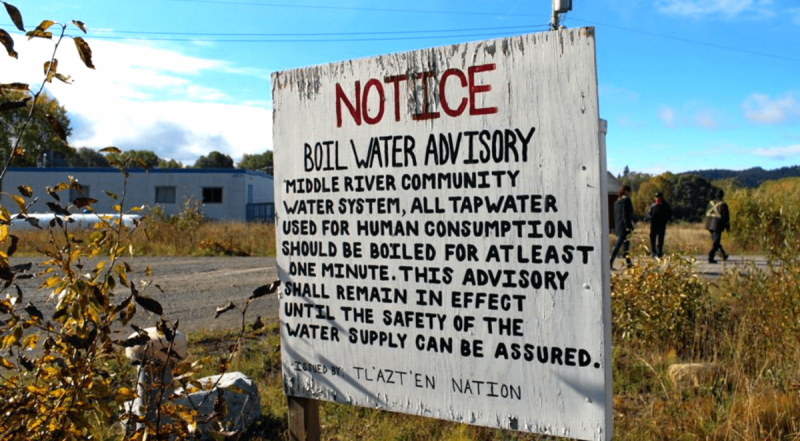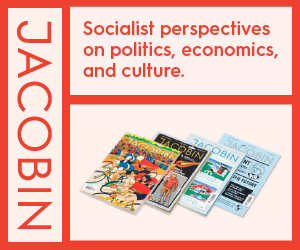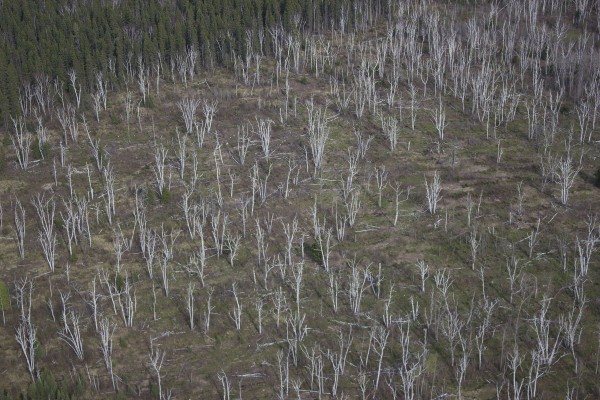The Day After: Infrastructure
The fourth installment in an ongoing series analyzing the perils and possibilities of our collective response to COVID-19

An oil pipeline pumping station connected to the Keystone XL project, operated by TC Energy (formerly TransCanada). Photo by Shannon Patrick/Flickr.
The Day After: Infrastructure marks the fourth installment in an ongoing curated series that asks contributors to imagine the perils and possibilities that will ground our collective response to or emergence from the COVID-19 crisis. The first installment was about animals, the second was about food, and the third was about energy.
This series asks Canada’s leading scholars to respond to questions of “human-environment” relations to consider our post-COVID future: What opportunities make you hopeful and what risks do you see at the “human-nature” interface? How can we build an ethic of care for socioecological systems?
These scholars of critical environmental studies have dedicated their professional lives to grappling with questions of environmental conflict, governance and justice—here, we have asked them to turn their reflections toward the public. Together, we hope this contributes to a broad and ongoing discussion on how the COVID-19 crisis can produce visions of the future of “human-environment relations,” for better or worse.
Our fourth edition, about infrastructure, features contributions from Hannah Muhajarine, Deb Cowen, Adele Perry, Dayna Nadine Scott, and Michael Mascarenhas.
Hannah Muhajarine is a master’s student at the University of Manitoba, Natural Resources Institute, and an organizer with the Manitoba Energy Justice Coalition.
Last winter when the RCMP invaded Unist’ot’en camp, which has been standing in the path of the Coastal GasLink natural gas pipeline since 2010, Gidimt’en land defender Molly Wickham issued a call to “shut down Canada.” The Tyendinaga Mohawk responded by blockading the rail line between Montreal and Toronto, preventing any passenger rail between the two cities. Blockades also sprung up at export terminals in Vancouver and Halifax, the Canada-US border, and dozens of other highways and rail lines across Canada. While the economic costs of the blockades are hard to quantify, the idle rail cars and ships piling up at every blockade point were clearly visible. While some commentators claimed the blockades were doing the Wet’suwet’en no favours and turning public opinion against them, this economic disruption represented an assertion of power that could not be achieved through other forms of protest.
Many Canadian environmental NGOs have been arguing that disturbance caused by COVID is an opportunity to drastically shift course and build a recovery plan around a Green New Deal. They have put forward numerous principles and plans outlining what such a “just recovery” could look like. What’s missing is the grassroots pressure that will push these demands through—there is a lesson to be learned from the Wet’suwet’en and other Indigenous land defenders about the importance of disruptive direct action.
The original New Deal would not have been won without thousands of workers going on strike, and Nick Estes argues there is an affiliation between Indigenous-led blockades and the picket line. Last September, hundreds of thousands participated in the Global Climate Strike—but this was a strike only in name. More work needs to be done to build alliances between labour unions and the climate movement if the latter is to harness the disruptive power of a strike.
There is a danger that during COVID, climate organizers will retreat to Twitter, Facebook, Zoom webinars, and online petitions. But disruptions that safely maintain social distancing are more than possible if we think creatively (rent strikes, car convoys like this one in support of striking Amazon workers in Chicago, linked to Just Recovery demands). If the climate movement is serious about not just putting forward plans for a just recovery but actually winning transformative change, then we need to emulate the practices of Indigenous land defenders and think about how we can generate mass disruption during this unprecedented time.
Deborah Cowen is a geographer at the University of Toronto, a settler on the lands subject to the Dish with One Spoon Wampum, and a trustee of the Groundswell Community Justice Trust Fund.
Abolition is, arguably, all about infrastructure. The task at hand is to make infrastructure all about abolition. Infrastructures are the socio-technical systems built to reproduce life itself and particular ways of living, but they also produce premature death. Policing is not simply an infrastructure, it is a key socio-technical system of racial capitalism and settler-colonialism. Policing may well have its primary residence in police force, but it is a promiscuous power, a power that circulates through other infrastructure; in schools, banks, hospitals, public housing, transportation, family protection, and well beyond.
Historically, Canada’s largest investment in infrastructure was the transcontinental rail that pushed Indigenous people out while pulling the private property system and settlers in. The railroad that announced the birth of the settler state and the social relations it engineered required the protection of police. The rail was essential in settler claims to territory and jurisdiction and so too the making of another (police) infrastructure—the national border. It relied on capital accumulated through the financing of slavery and colonial violence in other parts of the world. Its construction came on the backs of thousands of Chinese workers’ lives. And it became a key employer and hyper-exploiter of Black people’s unfree labour.
Today, Canada invests unprecedented amounts in the protection and even purchase of pipelines that trespass Indigenous jurisdiction and wind the settler state even more tightly around extractivism and climate catastrophe. The segregated and financialized cities that run the extractive show are shaped and surveilled by police. The Wet’suwet’en and their supporters reminded us of the connections between contemporary and historical infrastructural violence when #ShutDownCanada targeted the trains after they were targeted by police for refusing a pipeline.
Abolition is a radical infrastructure plan. Black Lives Matter Toronto co-founder Sandy Hudson provocatively questions, if the genesis of the RCMP lies in racial and colonial terror, when exactly did a reckoning take place? Abolition is that reckoning. Abolition is not simply about dismantling police infrastructure but of building its alternatives. Janaya Khan knew this when they summoned the power of “Black Infrastructure” and pointed to the work of Black trans sex workers in creating infrastructures of transformative justice precisely because calling the police is not an option. Robin D.G. Kelley knew this too when he cited the radical movement infrastructures that have made this current moment matter. Alternative infrastructures abound, built in the wake of formal socio-technical systems or in struggle against them. These infrastructures of abolition, rooted in care and survival, inspire visions of life worth living and show us the road that can take us there.
Canadian Pacific train close to the small town of Pritchard, British Columbia. Photo from Flickr.
Michael Mascarenhas is an associate professor in the Department of Environmental Science, Policy and Management at the University of California, Berkeley, and editor of the upcoming book, Lessons in Environmental Justice From Civil Rights to Black Lives Matter and Idle No More.
It is difficult to imagine the possibilities from this particular conjuncture we are in. The perils are much more obvious. The novel coronavirus pandemic has highlighted the deep inequities in how people of different races work, live and play. In the state of California, where I currently work and live, Black people have almost two times the rate in deaths than the population at large. Latinos in California make up 39 percent of the state’s population but account for almost half of all reported virus cases.
The Governor of New Mexico, Michelle Lujan Grisham, warned that coronavirus “could wipe out tribal nations” in the United States. The Navajo Nation has more coronavirus cases per capita than any state in the US, according to data released by the Navajo Nation. In Canada, systematic inequalities in health care, housing, and water infrastructure mean that, once again, First Nations communities neither have the resources nor the safety net to safeguard themselves and their loved one’s health during the pandemic. As of March 2020, there were 61 long-term drinking water advisories for First Nations communities.
The COVID-19 pandemic also highlights the importance of fair and equitable access to clean water. Governments and health agencies continue to emphasize handwashing and social distancing as the most prudent defenses against the spread of the virus. Yet for many First Nations and other people of colour who live without potable water or in crowded housing, neither precaution is an option. For many, particularly in the United States, water affordability has also put them at risk. The city of Detroit, for example, launched a massive shutoff program, disconnecting more than 140,000 households, and tossing its citizens, 40 percent of them living below the poverty line, into the largest documented hepatitis outbreak in American history. Currently, there are more than 70 million people worldwide forcefully displaced and living in overcrowded refugee camps where access to water and social distancing is impossible.
For many, the disproportionate impacts of the novel coronavirus pandemic has highlighted the degree to which systemic racism has become collapsed into modern society. The current crisis has also underscored the importance of public infrastructure in providing access to clean and affordable water to all. Those thirsty for environmental justice in Detroit argue that water is the fight of their lifetime. Similarly, First Nations in Canada made water protection and climate change the number one and two priorities of their annual general assembly in the summer of 2019. Governments are now finally pushing for reforms to guarantee access to clean water and affordable running water, realizing that water access is not just a problem of poor people of color. Imagining a society with an equitable public health infrastructure, where people have access to water regardless of who they are, makes me hopeful.
Adele Perry is Distinguished Professor in the Department of History and Women’s and Gender Studies at the University of Manitoba. She is the author of Aqueduct: Colonialism, Resources, and the Histories We Remember.
Winnipeg is a city of water, but nobody wants to drink it. The Assiniboine and Red are muddy, rich in abandoned shopping carts and random hunks of wood, and prone to flooding. They are spaces of social possibility. People build improvised, fragile shelters on the banks, and walk and skate on the frozen rivers in winter. The rivers are also places of violence and enormous loss. The bodies of too many Indigenous women have been pulled from those rivers, and their families keep looking.
The opening of so many emails reminds us that the experience of the COVID-19 pandemic is singular and unprecedented. But it is also familiar. Our history has been made and remade in epidemic and pandemic disease and responses to them. In early-twentieth century Winnipeg the disease that commanded the most attention was typhoid. Regular typhus outbreaks troubled the city’s sense of itself as progressive, modern, and white. 1904 was an especially bad year, with 1,276 cases and 133 deaths in a city with a population of a little more than 90,000.
Addressing the city’s typhoid problem meant addressing the city’s infrastructure, especially the parts that handled waste and delivered water. Between 1913 and 1919, Winnipeg built an expensive and ambitious aqueduct that connected the city to the water supply of Shoal Lake, approximately 150 kilometers to the east. The building of the Winnipeg Aqueduct was premised on the dispossession of critical parts of Shoal Lake 40 First Nation’s reserve lands. This was Indian Act sanctioned theft, one that has had enormous consequences for the Annishinaabeg First Nation. A 24 kilometre gravel road linking Shoal Lake 40 to the TransCanada highway opened in June of 2019 and work on a local water treatment facility is underway, but Shoal Lake 40 remains on a long-term drinking water advisory. As of February 2020, so were at least another 61 First Nations south of 60.
Winnipeggers who are housed have little reason to worry about having enough water to drink, or wash our hands frequently in an effort to keep COVID-19 at bay. Since Shoal Lake water flowed in the city’s taps in 1919 our water supply has been cheap, plentiful, and safe. It asks very little of us, though it has cost Shoal Lake 40 dearly.
Plans to build the aqueduct bringing Shoal Lake water to Winnipeg was about the local elite’s vision of capitalist prosperity and anxieties about fire protection, and much more. But the plan came into shape and garnered support in a city shaped by typhoid, and was delivered in a city in the midst of the pandemic that we most frequently liken to the current one, the influenza pandemic of 1918-19.
So much has come into sharp focus since Manitoba announced its first presumptive case of COVID-19 on March 11, 2020. Time has been slower in some respects and faster in others. How we are living through this pandemic reflects the inequitable world created in and around the ones that came before.
A boil water advisory sign near the Tl’azt’en First Nation, in the northern interior of British Columbia. Photo from Flickr.
Dayna Nadine Scott is York Research Chair in Environmental Law & Justice in the Green Economy. She recently co-edited “Getting Back the Land” a special issue of the South Atlantic Quarterly with Shiri Pasternak, and is currently working on a research project on the resistance to mining infrastructure in the Ring of Fire in partnership with Neskantaga First Nation.
If, as Arundhati Roy observes, the “pandemic is a portal,” forcing us to “break with the past and imagine our world anew,” infrastructure seems like an apt place to begin. Winona LaDuke and Deborah Cowen call the infrastructures of extraction the “spine” of the settler colonial nation. If that is the case, we must build out of this pandemic a vital new central nervous system: communities energized by a completely different conception of what “critical infrastructure” entails.
Take the Ring of Fire as an example. Governments see it as a major mineral discovery, containing commercially-significant deposits of chromite, but say it needs to be “unlocked” as it sits in the heart of Ontario’s roadless northern boreal forest, in the Attawapiskat river watershed that is the “lifeblood” of several remote communities of Anishinaabe and Anishini peoples. Many of those communities currently endure major infrastructural deficits: a persistent lack of access to safe drinking water, failing wastewater systems, inadequate housing. Almost a decade ago, when the communities in the region were united, their position was that there would be “no road to the mine without recognition of Indigenous jurisdiction,” but over the course of the past six years of divisive bilateral negotiations with the province, today’s reality seems to be “no community infrastructure without a road to the mine.” It is hard not to conclude that this is how the settler state primes an extractive frontier: communities are being starved out such that capitulating to mining starts to look like the only way out.
We need to think about “critical infrastructure” differently such that communities in the Ring of Fire region (and other communities across the country) can prioritize their own visions of the future for their kin, lands and waters. How can we enable community-driven infrastructure solutions that answer essential local needs? Instead of rushing to build roads for mining companies—infrastructure to serve an out-dated extractive economy and settler colonial mentality—we could be building renewed relations for prosperous, caring and just collective futures.
Jonathan Peyton is an associate professor of geography at the University of Manitoba and author of Unbuilt Environments: Tracing Postwar Development in Northwest British Columbia.
James Wilt is a master’s student in geography at the University of Manitoba and author of Do Androids Dream of Electric Cars? Public Transit in the Age of Google, Uber, and Elon Musk.










